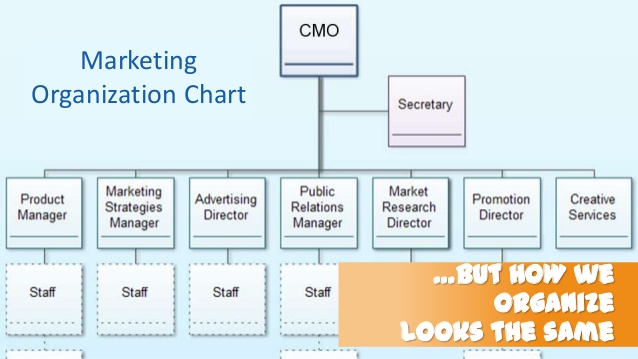

We pump oil into our cars, argue about it in politics and fight wars over it. And that’s without even getting into its role in global climate change. If successful, this sort of initiative would kill two birds with one stone, dealing with waste and reducing society’s dependence on crude oil. And this couldn’t come at a better time, with something like 88 percent of all plastic used worldwide being either dumped, burned, or leaked into the environment. This indicates that just 12 of the 359 million tonnes of plastic generated each year in the globe get recycled.
It was first developed in the 1950s and since then its safety features have been much improved. Now over 11% of the world’s electricity is produced from nuclear energy. Nuclear grew by 3.3% in 2018 mainly as a result of new capacity in China and the restart of 4 reactors in Japan . Today oil supplies about 40% of the world’s energy and 96% of its transportation energy. The world has been consuming an equivalent of over 11 billion tonnes per year .

Both inverse.com and bbc.com discuss how some technologies are developing that may allow companies to break down some plastics and turn them back into oil. Oil and petroleum based fuels can be substituted with other types of fuel. As easily and cheaply mined deposits of oil start to be depleted, the price of oil will likely start to increase before oil runs out.
Will oil ever reach 100 again?
While the number is easy to understand, it’s a red herring because it assumes production will remain constant forever and that the current proved reserves estimates represent all the oil left. Transformative adaptation measures, too, are critical for securing a more prosperous future. The IPCC emphasizes the importance of ensuring that adaptation measures drive systemic change, cut across sectors and are distributed equitably across at-risk regions. The good news is that there are oftentimes strong synergies between transformational mitigation and adaptation.
- The fossilized organic compounds of ancient life on Earth sure do provide us with a handy way to get around.
- And natural gas is key to making some fertilizers, which, if gone, would cripple food production around the globe.
- It’s also worth noting that there’s a difference between running out of oil on a worldwide level, and an individual country running out of uranium.
- However, according to BP , earth has 53 years of oil reserves left at current rate of consumption.
The 1P estimate is an estimate of proven reserves, what is likely to be extracted from a well, 90% probability. Probable reserves are given 50% certainty and possible reserves a 10% certainty . The Organization for Petroleum Exporting Countries reports that there are 1.5 trillion barrels of crude oil reserves left in the world. These are proven reserves that are still capable of being extracted by commercial drilling. That figure may seem like a lot , but consumption rates are growing year by year.
Other technological developments like hydraulic fracturing , have also contributed to increasing the world’s proven reserves despite an increase in global consumption . While that sounds like quite a lot, estimates of 47 years are based on oil consumption being maintained at around 35 and half billion barrels a year, or 97 million barrels of oil a day. Based on the 2016 world population, that works out at around 5 barrels per person per year, or 0.5 gallons per person, per day.
Most viewed
With no crude oil, our species would survive, just as we did before crude oil. Most of the hundreds of thousands of years of existence of human beings transpired without crude oil, and doubtless, we’d survive in the future without it. From a typical barrel of oil, about one-half is used for fuels, while the rest is used to make products like asphalt and bitumen, lubricants, naphtha, waxes, and a wide variety of chemicals. Some of this includes medicines like antihistamines, antiseptics, and other essential products like insecticides and fertilizers for farming. For every product and service, you can think of; the oil will be involved somehow in the supply chain.
Industry and manufacturingOil is used as a feedstock or raw material in hundreds to thousands of different manufacturing products, such as plastics, polyurethane, solvents, and more.
The booking largest oil company in the world is, without a doubt, one of the main sources of oil worldwide. In the world there are other great Bookings of oil, such as Venezuela wave of Russia. However, the booking of the Persian Gulf is located in a strategic position that allows you to have a high impact in the world market for this resource. Oil is a vital resource for the world economy, as it is used to produce gasoline, diesel, chemicals and other products. It is also the source of energy for transportation, industry, and heating. Because of this, the depletion of oil will have a significant impact on the economy and the way we live.
To date, reserve replacement is at a 20-year low, according to Rystad Energy data; oil companies are replacing just one in six existing barrels with new discoveries. Investment in these improvements and the application of new extraction methods, however, depends on oil prices, which, in turn, depend on numerous factors. And while it may sound counterintuitive, low oil prices tend to spur greater improvements in oil extraction as companies strive to boost the efficiency of drilling while maintaining—or even lowering—costs. While still in their infancy, biofuels or synthetic fuels can be used as direct replacements for oil-derived fuels with little or no conversion of an internal combustion engine. But, from a resource supply point of view, biofuels are, theoretically, at least, never-ending. To reiterate, this is unlikely to happen for the reasons we’ve explained above.
These metals are also valued as “stores of value” in and of themselves of course and have been so for a very long time. We’ve explained the main reasons above, but there is another factor to consider — the relative rarity of a resource. It is highly likely that something equally as innovative will be devised in the future, so long as consumer demand remains high enough. Don’t fret though, it will take many trillions of years for Earth to completely “evaporate” at this rate. Lighter elements like hydrogen, helium, and oxygen are continually escaping into space.
March 20 marked the release of the final installment of the Intergovernmental Panel on Climate Change’s Sixth Assessment Report , an eight-year long undertaking from the world’s most authoritative scientific body on climate change. Or at least way more than many groups and people out there want you to believe. Today, the world is swimming in oil, and prices have been sliced in half over the past year. “Peak oil” theory for production is predicated on the work of legendary geologist M.King Hubbert, who in 1956 employed his now famous/infamous “Hubbert curve” to predict U.S. petroleum production would peak in 1970.
How Much Oil is Left in the World?
The International Energy Agency says that the world uses 34 billion barrels of crude every year. So, regardless of the exact quantity, the fact remains that the supply is dwindling more and more every day. That oil, like coal and natural gas, is a finite resource is nothing new. It was this finite nature of fossil fuels that sparked the peak oil supply worry. Yet those worrying about peak oil did not factor in the continual improvement of exploration and extraction technology, and the development of new methods to tap these finite resources. Crude oil is the world’s main source of fuel and largest overall source of primary energy.
Total Global Oil Production
When these rise to a point when a company cannot extract the oil at a profit, the deposit becomes economically unrecoverable. Even if it remains technically recoverable, this is one more reason to take any global oil reserve estimate with a pinch of salt. Whatever technically recoverable oil the world has – is not all economically recoverable. how much oil left in the world While at the moment, demand is lagging behind supply, most forecasters expect this to change as the global population grows fast, and this leads to an equally rapid rise in demand for energy. With regards to other fossil fuels, we have an estimated 53 years of natural gas, and 114 years of coal left to rip out of the ground.
An analysis of world and country specific oil shortages is outside the scope of this guide. Firstly, it’s worth pointing out the difference between oil and petroleum. If you want to know other articles similar to How much oil is left in the world? Although there are large amounts of oil in the world, not everything is available for extraction. Some deposits are in areas remote or inaccessiblewhile others are protected for environmental reasons.
In other words, technology has a big impact on what’s considered a proved reserve. And this, according to the BBC, is exactly what one UK-based company is currently attempting to achieve. Called Recylkcing Technologies, the company is currently developing a machine that can generally treat unrecyclable plastics back into a liquid oil form. So long as plants can grow on this planet, we can always have a supply of liquid fuels for our machines. Rising prices and reduced supply and entrepreneurship could possibly get us there if allowed to run their natural course. Some feel that Central command and control of such a transition would be catastrophic for us all.
This is equivalent to about 70 years of production at current rate. However, OPEC also estimates that the world has probable and inferred reserves of 2.5 trillion barrels of oil, which would be equivalent to about 100 years of production at the current rate. The new research, published in the journal Nature, used a complex model of global energy use that prioritised use of the fossil fuels that are cheapest to extract, such as Saudi oil, in using up the remaining carbon budget.
Back then the world consumed just under 60 million barrels per day, and global proved reserves for oil stood at almost 700 billion barrels. At that rate, the world should have exhausted all its proved reserves sometime in December 2013. But instead of the last drop of oil being squeezed out of the Earth, global production has increased by 46%, and global reserves now stand 1 trillion barrels higher than they did 33 years ago. Around the world, highly vulnerable people and ecosystems are already struggling to adapt to climate change impacts. So, as the difficulty level in oil extraction increases, so do costs.
Furthermore, the production of oil depends on demand, and the development of technology. Vehicles get more and more efficient when it comes to consuming oil, while new technology such as electric cars or hybrids can take a bite out of use as well. While we can never know when that day may come, it is prudent that many industries explore methods of replacing crude oil-based raw materials before they are forced to.
Sulfur-rich oil is very complex and energy-intensive to process which obviously increases the cost of bringing it to market. Before we answer this question, we’ll need to expand on the term “proven” we mentioned earlier. This is important to understand as it will help us honestly address whether or not oil will ever run out.
